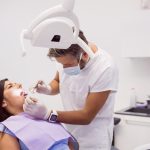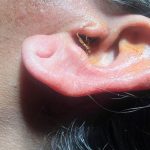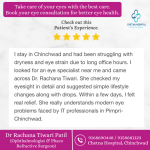A compound naevus, commonly known as a mole, is a benign growth of melanocytes (pigment-producing cells) on the skin. These moles can appear in various shapes, sizes, and colors and may be flat or raised. While most compound naevi are harmless, some may cause aesthetic concerns, irritation, or, in rare cases, may develop into skin cancer. This is why many individuals opt for compound naevus removal.
Why Remove a Compound Naevus?
There are several reasons why people choose to remove a compound naevus. For some, it’s a matter of cosmetic concern, as the mole can affect skin texture or appearance. Others may seek removal due to the mole’s irritating nature, especially if it rubs against clothing or gets injured. Most importantly, some people remove naevi for health reasons, as changes in size, color, or shape can indicate the mole may be evolving into a skin cancer like melanoma.
Popular Techniques for Removal
Several advanced techniques are available for compound naevus removal, including:
- Surgical Excision: This is the most common method, where the mole is removed surgically with a small scalpel. The procedure is precise and typically leaves minimal scarring if done correctly.
- Laser Removal: Laser technology can effectively target pigment in the mole, breaking it down and leaving the surrounding skin intact. This option is best for smaller, flat moles.
- Shave Excision: For raised moles, shave excision involves removing the mole with a small blade, followed by cauterizing the area to stop bleeding. This method usually doesn’t require stitches.
- Punch Excision: In cases where precision is needed, punch excision removes the mole and surrounding tissue in a circular motion, which can help with minimal scarring.
What to Expect During and After the Procedure
Most compound naevus removal procedures are minimally invasive and performed under local anesthesia. This means you won’t feel pain during the process, although some minor discomfort may occur after the anesthetic wears off. Recovery time varies depending on the method used, but most individuals can resume normal activities within a few days.
Post-procedure care involves keeping the site clean and avoiding sun exposure to reduce the risk of scarring. It’s also essential to follow any aftercare instructions provided by your dermatologist or cosmetologist to ensure the best healing outcome.
Choosing the Right Professional
When considering mole removal, it’s crucial to consult a certified dermatologist or cosmetologist. A professional will evaluate the mole’s characteristics and recommend the most appropriate treatment for your skin type and health needs. Advanced techniques like Taylor Liberator Subcision, MNRF, TCA CROSS, and Punch Excision can provide effective, long-lasting results with minimal scarring when performed by an experienced expert.
Conclusion
If you’re dealing with a compound naevus that affects your appearance or health, removal may be the right choice. Whether for cosmetic or medical reasons, modern techniques make mole removal safer and more effective than ever. Always seek the expertise of a qualified professional like Dr. Aishwarya Patil Pethe, who specializes in mole removal treatments. Prioritize your skin’s health and enjoy smoother, clearer skin with the right care and attention!
For Consultation Contact us on 9158681123
Website – www.chetnahospital.co.in
Address – Chetna Hospital, Sambhajinagar, MIDC, G Block, Near Rotary Club, Chinchwad 411019
.
.
.
#hospital#pune#pcmc#chinchwad#health#healthcare#skin#dermatologist#skinspecialist#skinclinic#hairdermatologist#skindoctor#dermatologistappointment#skincareprofessional#derma#skindr













